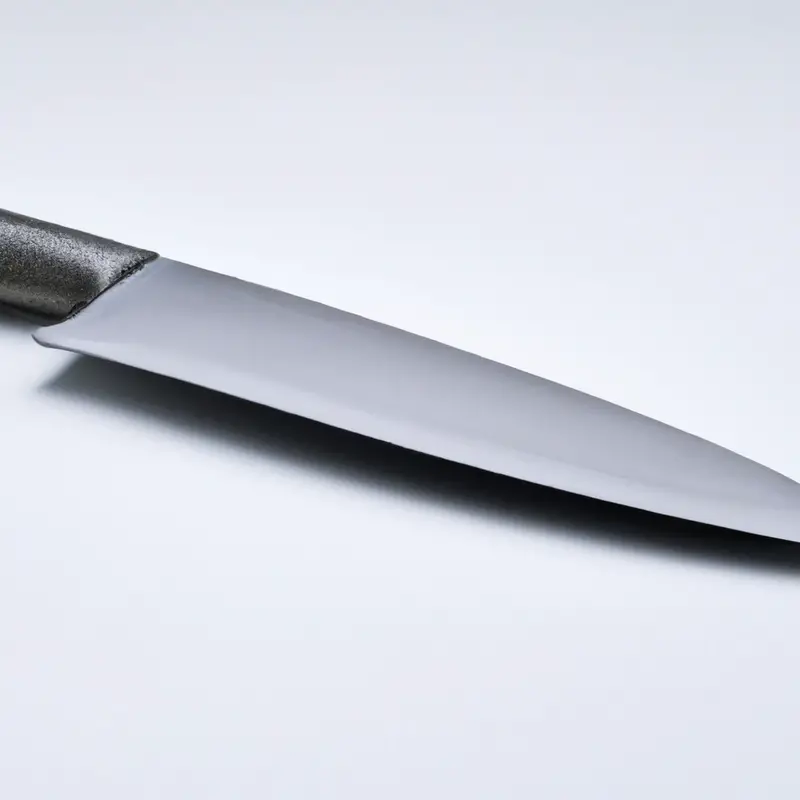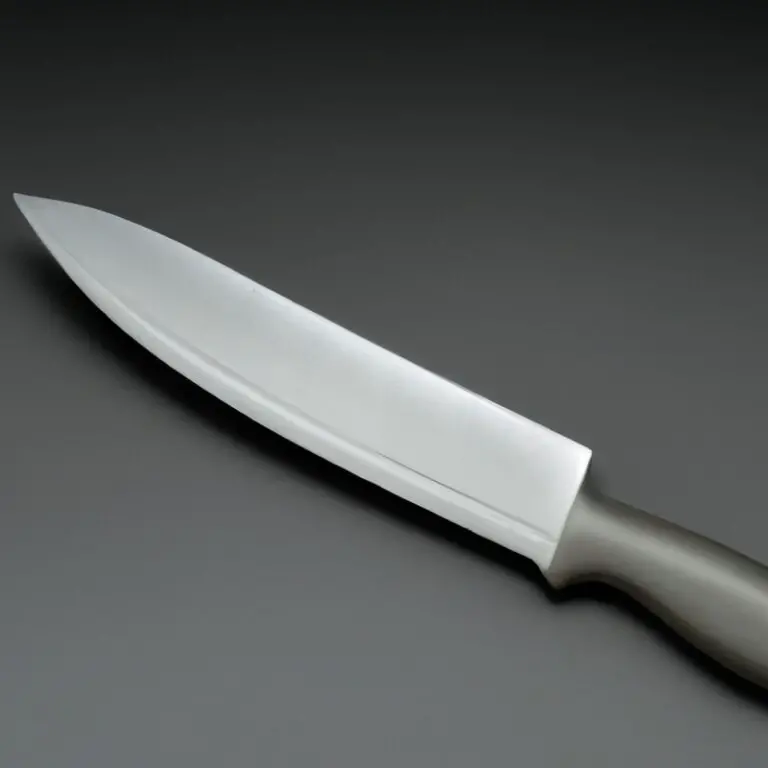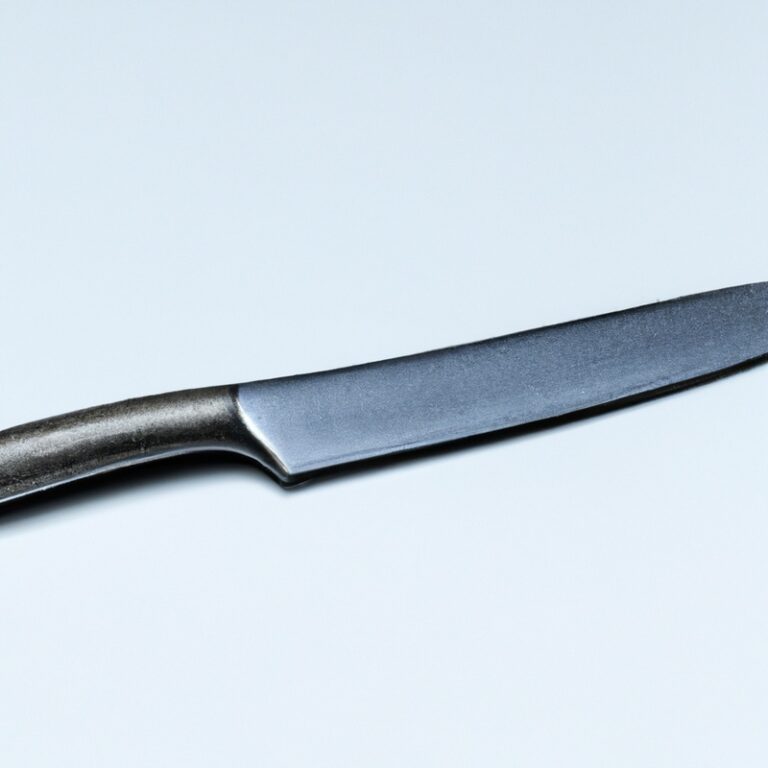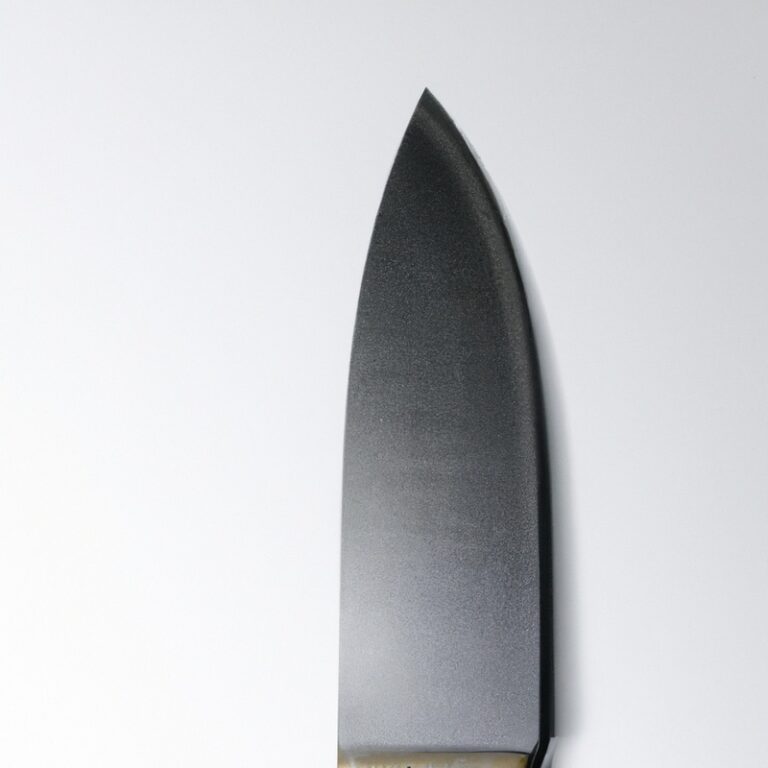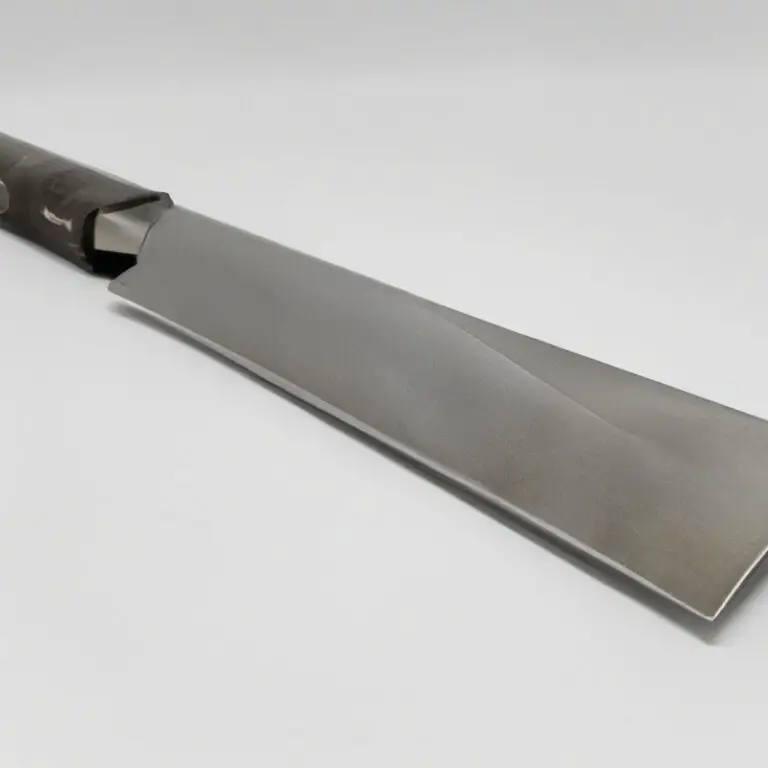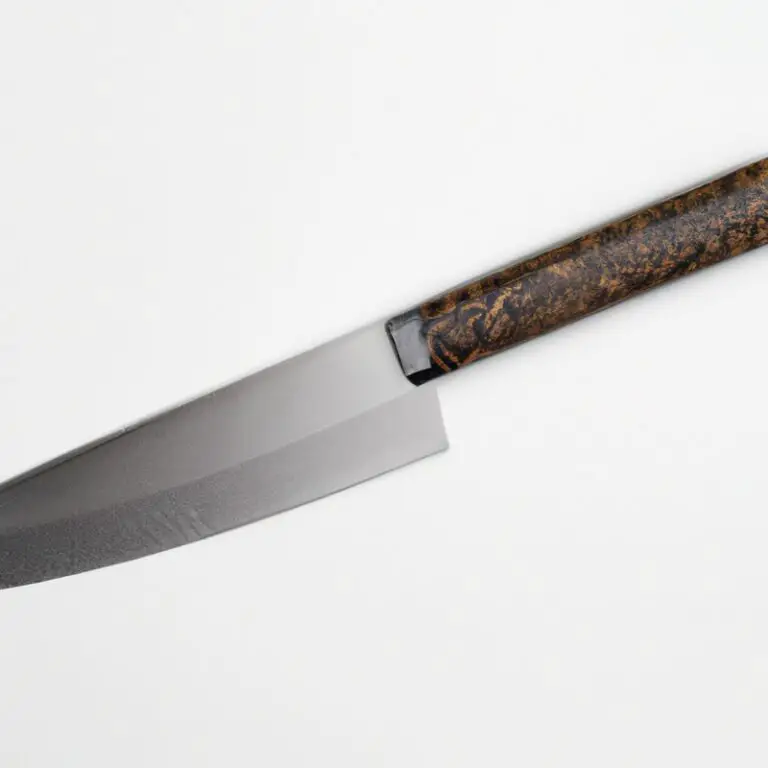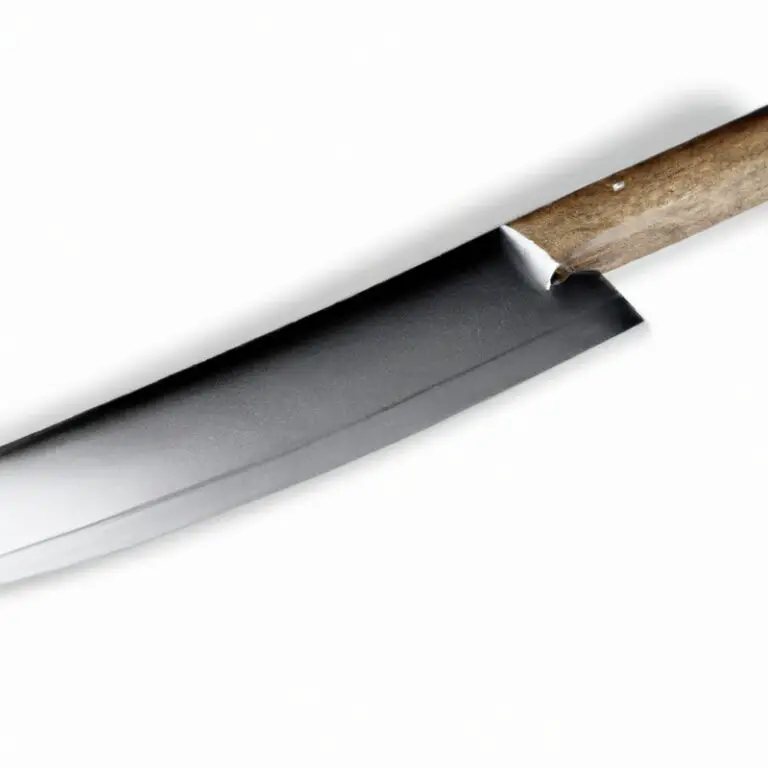How To Maintain The Stability Of a Gyuto Knife During Cutting? Tips
Key Takeaways:
- Proper grip and technique are crucial for maintaining stability when using a Gyuto knife.
- A sharp blade is important for effortless and stable cutting with a Gyuto knife.
- Practice and experience can help improve stability and accuracy when using a Gyuto knife.
- Regular maintenance and sharpening can help ensure the stability and longevity of your Gyuto knife.
Are you tired of feeling like a novice chef struggling to maintain control of your Gyuto knife while prepping food? Look no further, because in this article, we’ll delve into the anatomy of a Gyuto knife and the importance of proper grip and hand position to ensure maximum stability during cutting.
We’ll explore techniques for maintaining a sharp blade and the impact of the cutting surface and blade angle on stability.
Plus, we’ll share tips for using a honing steel and proper slicing and chopping techniques. Don’t miss out on these invaluable insights for mastering the art of knife-work.
| Technique | Description |
|---|---|
| Grip | Hold the knife handle with your dominant hand and use your other hand to guide the blade. Use a pinch grip, with your thumb and index finger on either side of the blade, close to the bolster. |
| Posture | Stand with your feet shoulder-width apart, with the knife arm extended and your body weight behind the knife. Keep your elbow bent and close to your body. |
| Blade angle | Maintain a consistent angle of about 15-20 degrees between the blade and the cutting board. This will help to control the cutting depth and prevent the knife from slipping. |
| Technique | Use a rocking motion to cut through ingredients, moving the blade up and down rather than pushing it forward. Use the full length of the blade and avoid pressing down too hard. |
Understanding the anatomy of a Gyuto knife for better stability during cutting
To understand how to maintain the stability of a Gyuto knife during cutting, it’s essential to know the anatomy of this knife. A Gyuto knife usually has a thin and sharp blade that tapers to a pointed tip.
This type of knife features a long and flat blade that can cut through thicker foods with ease.
The blade’s heel is where it meets the handle, which should have a solid grip for optimal stability. The blade’s thickness and length may differ, but a razor-sharp blade is necessary for cutting stability.
Understanding the anatomy of this knife is crucial for achieving stability during cutting and minimizing the risk of injury.
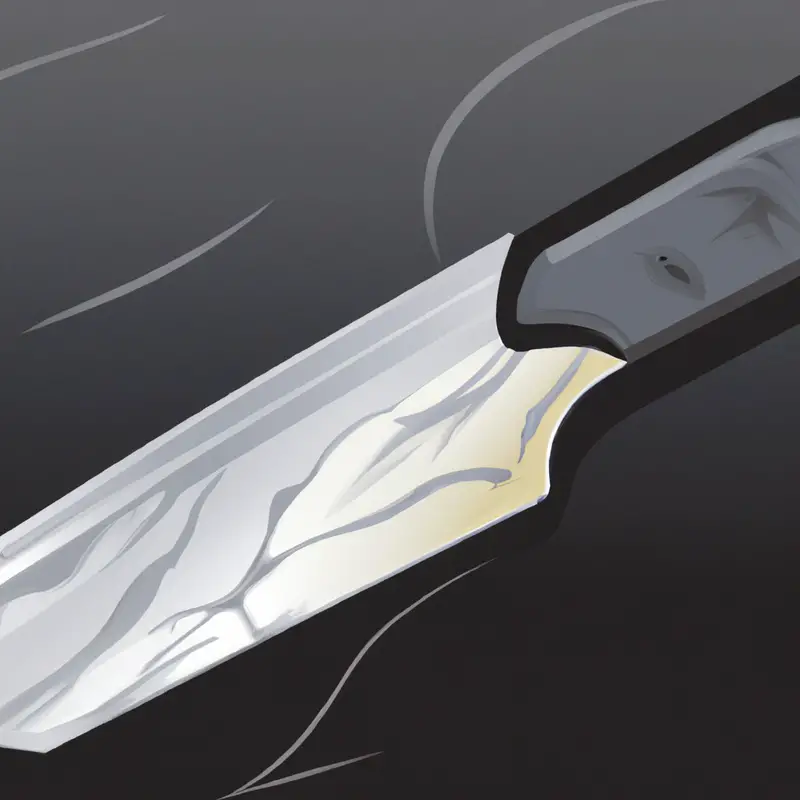
The importance of proper grip and hand position when using a Gyuto knife for stability
Proper grip and hand position are essential when using a Gyuto knife to maintain stability during cutting. Having a firm grip on the handle and maintaining a secure grip on the blade’s spine can prevent slipping and injuries, making it easy to control the knife’s movement.
The right hand position should have the thumb and index finger gripping the blade’s heel while the other fingers wrap around the handle.
The opposite hand should be on the cutting board to hold the food in place. Proper grip and hand position can enhance control and maximize safety while using a Gyuto knife.
How to maintain a sharp blade to reduce slipping and increase stability
To maintain a sharp blade and increase stability, it is crucial to keep your Gyuto knife clean and dry after each use. Use a sharpening stone regularly to maintain the blade’s sharpness.
Always ensure that the blade’s angle matches the manufacturer’s recommendations and avoid excess pressure when sharpening.
A honing steel can help maintain sharpness between sharpening sessions. In addition to sharpness, the blade’s smoothness is also crucial for stability.
Remove nicks and burrs by gently running the blade over a sharpening stone or honing steel.
Lastly, avoid cutting hard materials like bones or frozen foods, as this can cause the blade to slip and become unstable.
The role of cutting surface in maintaining the stability of Gyuto knife
The cutting surface plays a vital role in maintaining the stability of a Gyuto knife during cutting. A proper cutting board provides a stable base for the knife and reduces the risk of slipping or cutting unevenly.
Wooden or plastic cutting boards are ideal for Gyuto knives as they are not too hard and do not dull the blade quickly.
Glass and stone boards should be avoided as they can damage the blade. It is also essential to keep the cutting board clean and free of debris to prevent damage to the blade and maintain stability.
The benefits of using a cutting board to enhance stability of Gyuto knife
Using a cutting board is crucial for maintaining stability while using a Gyuto knife. A cutting board gives the knife a surface to grip onto, reducing the risk of slipping and increasing stability.
It also protects the blade from dulling on hard surfaces like granite or metal countertops.
A cutting board made of wood or plastic is ideal for Gyuto knives as it is less likely to damage the blade. Additionally, a cutting board makes it easier to control the angle and direction of the cut, resulting in a cleaner and more precise cut.
Always ensure that the cutting board is clean and dry before using it to prevent contamination.
Using a cutting board is a small but essential step to maintaining the stability of your Gyuto knife.
The impact of blade angle on the stability of Gyuto knife
The blade angle of a Gyuto knife has a significant impact on its stability during cutting. A steep blade angle, usually between 10-15 degrees, provides a sharp edge that is ideal for precision cutting but can be unstable during heavy chopping tasks.
On the other hand, a shallow blade angle, typically between 20-25 degrees, creates a durable edge that is more stable during chopping and slicing.
The blade angle is also essential when sharpening the knife. Sharpening at the wrong angle can create a weak or uneven edge, increasing the likelihood of slips and reducing the knife’s stability.
Therefore, it is essential to choose the appropriate blade angle for the task at hand and to maintain the blade’s angle during sharpening.
Regular sharpening and maintenance of the blade’s angle can improve the stability and overall performance of the Gyuto knife.
The advantages of using a honing steel for maintaining knife stability
Using a honing steel to maintain the stability of a Gyuto knife has numerous advantages. Honing realigns the small metal particles on the knife’s edge that bend during use, ensuring the blade remains sharp and straight.
This results in a knife that is easier to control and less likely to slip during use.
Honing also extends the knife’s lifespan by reducing the frequency of sharpening, which means less metal needs to be removed, resulting in a longer-lasting blade.
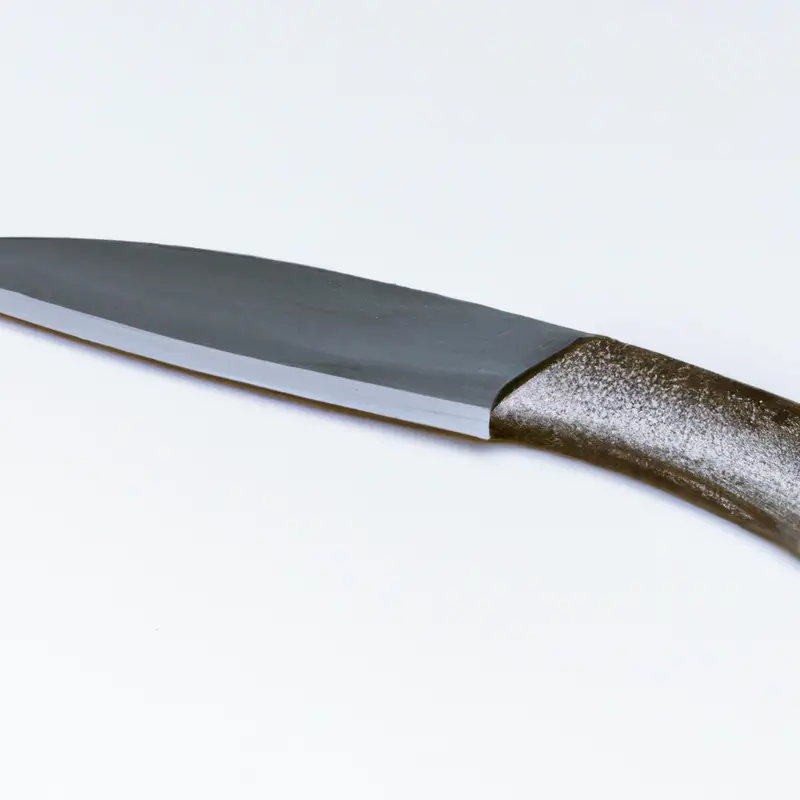
The impact of blade length on the stability of Gyuto knife
The blade length of a Gyuto knife can have a significant impact on its stability during use. Longer blades offer greater cutting surface area and can make it easier to slice through larger items like meat or vegetables.
However, longer blades may also feel heavier and be more difficult to control, potentially compromising stability and precision.
On the other hand, shorter blades may be lighter and easier to maneuver, but they may not offer as much cutting surface area. Finding the right blade length for your specific cutting needs can help ensure better stability during use.
It’s important to consider both the length and weight of the blade when selecting a Gyuto knife.
A heavier, longer blade may be preferred for tougher cutting tasks, but a shorter and lighter blade may be better suited for more delicate cuts. Practice and experimentation can help you determine the best blade length for your needs and preferences.
Proper techniques for slicing and chopping with a Gyuto knife to maximize stability
To maximize stability and prevent accidents when using a Gyuto knife, it’s crucial to follow proper slicing and chopping techniques. Here are some tips for using a Gyuto knife effectively:
- Start by holding the knife properly with a firm grip and placing your other hand on top of the blade for a better cutting angle.
- Keep the blade perpendicular to the cutting board and use a rocking motion to cut through the ingredients.
- When making larger cuts, use a sawing motion instead of pushing downward to prevent the knife from slipping.
- Always use a slicing motion when cutting protein, which means making long, smooth cuts instead of chopping quickly.
- Ensure that your knife is sharp before use to avoid slipping and maintain control.
By following these techniques, you can maximize your stability when using a Gyuto knife and reduce the risk of injury.
The significance of keeping a steady pace when using a Gyuto knife for stability
Keeping a steady pace when using a Gyuto knife is essential for maintaining stability. A consistent and controlled speed allows for better accuracy and reduces the risk of slip-ups or injuries.
Rushing through cuts can lead to an uneven edge and difficulty controlling the blade, compromising the stability of the knife.
Maintaining a steady pace promotes a fluid motion, making it easier to produce precise and uniform cuts. It is important to focus on maintaining a steady and controlled pace throughout the cutting process to ensure stability and safety.
Final Verdict
Maintaining stability while using a Gyuto knife is crucial for achieving precise and efficient cuts. To ensure stability, one needs to understand the knife’s anatomy, maintain a proper grip, sharpen the blade regularly, and use a suitable cutting surface.
By implementing these tips and techniques, home cooks and chefs alike can maximize the potential of their Gyuto knives, leading to superior culinary creations.
Remember, the stability of your knife ultimately affects the quality of your food. So, invest in your knife skills, and elevate your cooking game with confidence and precision.

